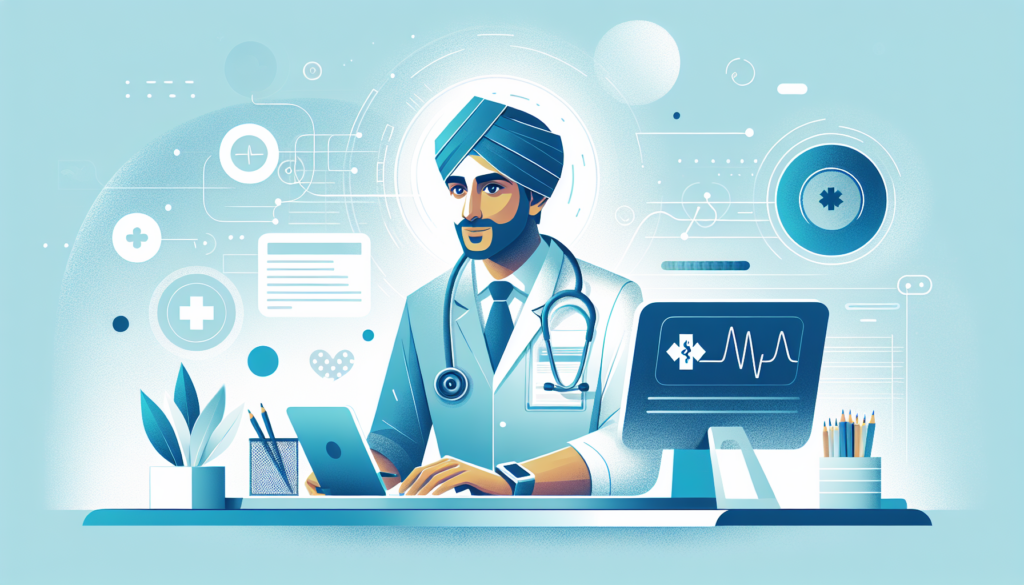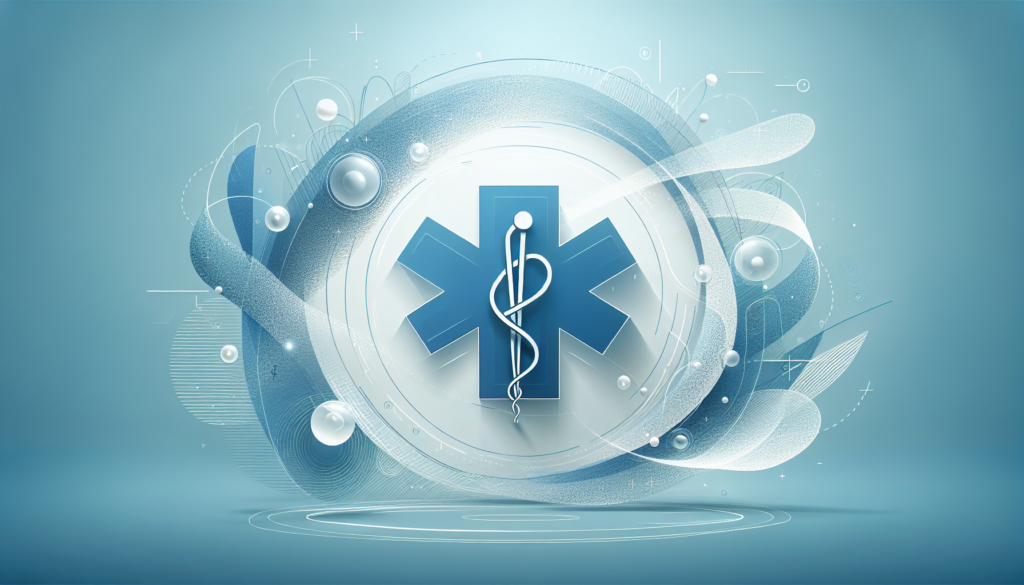Understanding the Importance of Medical Typing Skills
The proficiency in medical typing skills is a critical, yet often overlooked component in the healthcare industry. With the increasing burden of documentation, healthcare professionals require fast and accurate typing abilities to keep up with the voluminous charting and reporting responsibilities. Typing skills are not merely about speed; they encompass the complexities of entering patient data correctly, including understanding medical terminology, jargon, and navigating Electronic Health Record (EHR) systems efficiently. The importance of these skills cannot be understated, as they uphold the standards of patient care and medical record accuracy.
However, one must recognize that the fluency in medical typing has far-reaching implications. It enhances professional productivity and ensures that patient records are detailed and up-to-date, which is crucial for subsequent visits and ongoing care. Moreover, excellent typing capabilities serve as a preventative mechanism against miscommunication errors that could potentially arise from inadequately documented notes. Enabling professionals to rapidly translate complex medical encounters into written records without sacrificing accuracy is a non-negotiable aspect of high-quality care delivery.
In a practical sense, medical typing skills involve a combination of technical and domain-specific knowledge. On one hand, typists must possess a high degree of comfort with the tools of the trade, such as keyboard shortcuts and voice recognition software, while on the other hand, they must be well-versed in medical nomenclature and coding. This intricate balance ensures that transcription and data entry aid, rather than hinder, the overall healthcare process.
To maintain the integrity of healthcare documentation, continuous education and practice in medical typing are essential. Practitioners who invest time in honing these skills can reap benefits in terms of reduced time spent on administrative tasks, leaving more room for direct patient interaction and care. The transition towards AI-powered platforms, like ScribeMD, which strive to automate medical note-taking, can be seen as an advancement to further alleviate the pressures on medical professionals. By leveraging such innovative solutions, the healthcare industry can ensure that medical typing skills are augmented, rather than becoming a bottleneck, in the pursuit of excellence in patient care.
Components of a Comprehensive Medical Typing Test
Embarking on the search for the right medical typing software, like ScribeMD, requires understanding the nuances of what makes a typing test both comprehensive and suitable for the healthcare field. A robust medical typing test should evaluate more than just raw words per minute (WPM), as accuracy and familiarity with medical terminology are paramount. It must challenge candidates with simulations of real-world medical scenarios, including dictation that contains complex medical jargon, patient histories, and reports that are reflective of actual work situations.
One integral component to look for in a medical typing test is the medical terminology accuracy. This goes beyond general language competence to include the candidate’s familiarity with pharmaceutical terms, anatomical language, and various medical conditions and procedures. The precision with which these terms are used can affect patient outcomes and thus it is critical for any medical typing test to assess this knowledge rigorously.
- Understandable Medical Scenarios
- Pharmaceutical Terminology Proficiency
- Anatomical Language Use
- Medical Conditions and Procedures Awareness
Adaptability to different audio environments is also a crucial part of a medical typing test. Participants should be exposed to different accents, dictation speeds, and audio qualities that mimic the diversity found in healthcare settings. This assesses the ability to maintain a high level of accuracy amidst varying dictation challenges. Furthermore, effective tests should incorporate a mix of structured and unstructured dictation to evaluate a typist’s skill in organizing and formatting notes according to established standards, as is required in daily medical practice.
- Accent and Speech Variance Comprehension
- Resilience in Differing Audio Qualities
- Structured and Unstructured Dictation Performance
Finally, to assess a candidate’s ability to function efficiently within the technological ecosystem of modern healthcare, a comprehensive medical typing test must include components that simulate the use of electronic health record (EHR) systems. Familiarity with EHR navigation and data entry is essential due to its prevalence in medical documentation. Testing should challenge participants to navigate simulated patient files and input data accurately, reflecting the multitasking requirements of healthcare documentation management.
- Electronic Health Record (EHR) System Acclimatization
- Simulated Patient File Navigation
- Data Entry Accuracy and Speed
By focusing on these vital components, healthcare organizations can ensure that the medical typing tests they administer are not merely perfunctory, but rather serve as an effective litmus test for the complex and demanding role of medical documentations specialists. Upon the successful completion of a comprehensive exam, medical professionals should be confident in their ability to accurately and efficiently handle the rigors of medical transcription, thereby enhancing overall productivity and patient care quality.
Improving Your Medical Typing Test Scores
Achieving proficiency in medical typing is pivotal for healthcare professionals, primarily because accurate documentation is crucial in delivering high-quality patient care. Typing speed and accuracy are integral components of a medical typist’s skill set, both of which can be honed with diligent practice and the right techniques. To improve your medical typing test scores, it is essential to familiarize yourself with medical terminology, as this specialized vocabulary forms the backbone of clinical documentation.
To begin, engaging in regular typing practice focused on medical vocabulary can prove immensely beneficial. A strategy for this includes:
– Learning and mastering touch typing to avoid looking at the keyboard.
– Increasing your familiarity with medical jargon through reading and typing out clinical reports or practice paragraphs.
– Utilizing online typing tutors and medical transcription exercises that simulate real-life medical scenario dictations.
This consistent practice allows muscle memory to develop, making more accurate and faster typing almost second nature.
Another aspect to focus on is ergonomics and typing posture. It may not immediately seem pertinent, but maintaining the correct hand position and posture can significantly reduce fatigue, allowing for longer and more productive typing sessions. Additionally, customizing your workspace to suit your needs, including the adjustment of chair height and keyboard position, contributes to better typing ergonomics. Here is a quick checklist:
– Ensure that your back is supported and feet are flat on the floor.
– Keep wrists in a neutral position to prevent strain.
– Position your screen at eye level to minimize neck strain.
Following these ergonomic guidelines can lead to improved typing performance during tests.
It’s also crucial to take regular breaks to prevent overexertion and incorporate intervals of rest while studying. Techniques such as the Pomodoro Technique can be applied, wherein you focus intently for a set period and then take a short break, aiding in productivity and mental alertness. Besides refining your typing skills, these breaks can also reduce the likelihood of repetitive strain injuries, which are common among individuals who type for extended periods. Remember, improving typing test scores is a marathon, not a sprint, and your health should always take precedence.
Benefits of Automating Medical Documentation
The landscape of healthcare is continually evolving with technological advancements, and one significant leap is the automation of medical documentation. This innovation plays a pivotal role in enhancing healthcare delivery by streamlining the documentation process. One of the primary advantages is the significant time savings for medical professionals. Traditionally, doctors spend a substantial amount of their day filling out medical forms and writing patient notes, which can be substantially diminished with the introduction of an AI-powered digital scribe like ScribeMD. By automating these tasks, clinicians can reclaim precious hours, dedicating more time to patient care and less to paperwork.
Another key benefit is the improvement in the accuracy of medical records. Humans are susceptible to errors, especially when under pressure or tired, leading to potentially critical inaccuracies in patient records. Automation software uses sophisticated algorithms to ensure that the information gathered is precise and reliable, reducing the chances of manual errors. Moreover, this consistency in documentation aids in creating a standardized system across the healthcare facility, ensuring that every patient’s data is easily interpretable and conforms to the required formats and legalities.
- Time Efficiency: Less time spent on charting, more on patient interaction
- Accuracy & Reliability: Decreased human error in documentation
- Standardization: Uniform documentation across all healthcare channels
The reduction in administrative burden brought about by automated medical note-taking can also lead to a decrease in doctor burnout. With a lesser portion of their workload monopolized by repetitive clerical work, doctors can experience lower levels of stress and higher job satisfaction. This can enhance not only their well-being but also the overall patient experience as they interact with healthcare providers who are more focused and attentive. Additionally, automated documentation systems like ScribeMD can integrate with Electronic Health Record (EHR) systems, which can facilitate better data management and accessibility for healthcare teams, allowing for more coordinated and comprehensive patient care.
Fulfilling the administrative requirements with less effort and more efficiency also makes room for healthcare practices to scale. Automated documentation does not need to scale linearly with patient volume which means that a clinic can handle more patients without necessarily needing to increase the administrative staff. This scalability allows for better resource allocation and can potentially reduce the operational costs associated with record keeping. Furthermore, by ensuring detailed and organized patient documentation, healthcare providers can also improve their compliance with legal and regulatory standards, and accurately track a patient’s treatment history for future reference.
- Reduced Doctor Burnout: Better mental health for practitioners
- Improved Patient Care: Enhanced interactions and clinical outcomes
- Data Management: Seamless integration with existing EHR systems
- Scalability & Cost Efficiency: Economic documentation handling with growing patient numbers
- Regulatory Compliance: Adherence to legal documentation requirements
Embracing AI: How Scribemd.ai Reinvents Medical Typing
In today’s fast-paced medical environment, there’s a ceaseless quest for efficiency and accuracy in documentation. Scribemd.ai positions itself at the forefront of this movement, transforming medical typing through the cutting-edge infusion of artificial intelligence. This dynamic platform is more than just a transcription service; it’s a comprehensive digital scribe that interprets and processes spoken language with remarkable precision. By transcending the limits of traditional typing services, Scribemd.ai enables healthcare providers to navigate patient care documentation with unprecedented ease and reliability.
The integration of AI into medical typing through Scribemd.ai ensures a degree of consistency that purely human efforts might stumble to maintain. The system’s learning algorithms are fine-tuned to comprehend the nuances of medical grammar and syntax, fortifying the bridge between verbal medical exchanges and written records. Practitioners can now engage in natural, uninterrupted dialogue with their patients, as the AI-powered digital scribe listens, understands, and converts these interactions into comprehensive notes, with a finesse that mirrors the meticulousness required in healthcare.
One might ponder the intricacies of how Scribemd.ai revitalizes the traditional roles of secretaries and transcriptionists in healthcare. The platform is not just a tool for capturing words; it discerns context, differentiates speakers, and formats information into structured notes compatible with Electronic Health Records (EHRs). This level of sophistication empowers clinicians to devote their full attention to the patient, shedding the cumbersome task of notetaking. Consequently, medical professionals benefit from the luxury of more time—time that can be reinvested into quality patient care and improved outcomes.
The transformative impact of Scribemd.ai’s AI-driven capabilities on record-keeping efficiency stems from its high accuracy rates and swift response times. By leveraging state-of-the-art language models, the service minimizes the risk of errors that can lead to misdiagnoses or improper treatment plans. Furthermore, its intuitive interface and seamless integration into existing medical workflows make it an invaluable asset for clinicians looking to streamline operations. In essence, Scribemd.ai is redefining the realm of medical typing, making it a pivotal ally in modern healthcare.



